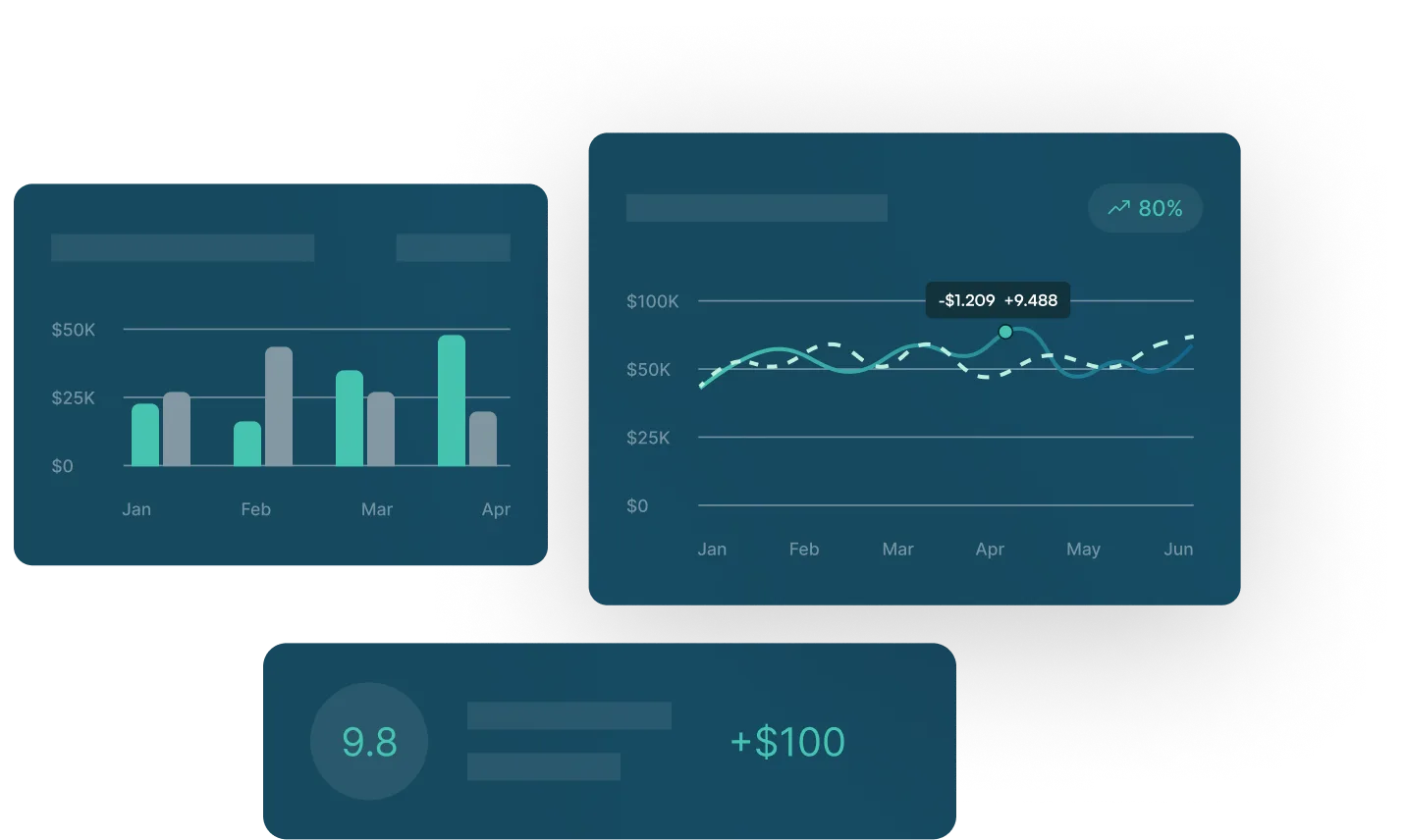What is Hedge Accounting?


Hedging is business strategy used to protect companies from financial risks by offsetting investments that reduce the potential impact of changes in the market.
Hedge accounting is an accounting method that records these hedges in a way that matches their results with the item they’re meant to protect. Instead of showing gains or losses right away, hedge accounting lines them up with the timing of the underlying risk, giving a truer picture of financial performance.
Why Do Companies Use Hedge Accounting?
Changes in interest rates, currency fluctuations, and commodity price swings can all impact a company’s financial stability. Without hedge accounting, these risks can cause earnings to appear more volatile than the company’s actual economic position.
By applying hedge accounting, organizations can better understand how these swings impact their bottom line and present more consistent results to stakeholders.
How Hedge Accounting Works
Hedge accounting works by changing how certain hedging transactions are recorded to accurately reflect a company’s risk management activities.
Instead of showing gains and losses from the hedge separately and immediately, it aligns them with the timing of the underlying exposure.
Standard Accounting vs. Hedge Accounting
In standard accounting, gains and losses from hedging instruments such as derivatives are recorded as soon as they occur. This means the hedge’s results can appear in the financial statements at a different time than the results of the underlying item it was meant to protect. The mismatch can create earnings volatility that does not reflect the company’s actual economic performance.
Hedge accounting changes this timing. It allows the gains and losses from the hedge to be recognized in the same period as the gains and losses from the hedged item. This better aligns the accounting treatment with the company’s risk management strategy.
Matching Gains and Losses
The core idea of hedge accounting is matching or pairing the results of the hedge with the results of the exposure it covers.
For example, if a company uses a currency forward to protect the value of an upcoming foreign sale, both the impact of the sale and the hedge would be reflected in the same reporting period. This alignment gives a clearer view of financial performance and reduces artificial swings in earnings.
Types of Hedge Accounting
Hedge accounting can be applied in different ways depending on the type of risk being managed. The three main categories are fair value hedges, cash flow hedges, and net investment hedges.
Fair Value Hedges
A fair value hedge is used to offset changes in the value of an existing asset or liability. For example, a company with fixed-rate debt might enter an interest rate swap to protect against rising market rates. Gains or losses from both the hedge and the hedged item are recorded in earnings in the same period, minimizing volatility.
Cash Flow Hedges
A cash flow hedge protects against variability in future cash flows, such as forecasted sales or interest payments. A company expecting to receive payment in a foreign currency might use a forward contract to lock in the exchange rate. Gains or losses from the hedge are recorded in other comprehensive income (OCI) and then reclassified into earnings when the hedged transaction effects profit or loss.
Net Investment Hedges
A net investment hedge reduces the risk of currency fluctuations affecting the value of a company’s investment in a foreign subsidiary. These hedges are often made with foreign currency debt or derivatives.
Benefits and Limitations of Hedge Accounting
Hedge accounting offers important benefits for managing financial risk, but it also comes with its own challenges. Understanding both sides helps companies make informed decisions about how and when to use it effectively.
Benefits
Hedge accounting offers several important advantages for businesses managing financial risks:
- Reduced Earnings Volatility: By aligning gains and losses from hedges with the related exposures, companies can smooth out swings in reported profits.
- Improved Financial Transparency: Hedge accounting provides a clearer view of how risk management activities affect financial results, helping get an understanding of the company’s true economic position.
- Better Risk Management Alignment: It ensures that accounting reflects the company’s actual strategies for controlling risk, enhancing decision-making and reporting accuracy.
Limitations and Challenges
Despite its benefits, hedge accounting also presents some challenges:
- Complexity: Implementing hedge accounting requires detailed documentation, ongoing effectiveness testing, and adherence to accounting standards.
- Cost: Hedge accounting requires significant administrative effort, which can be a burden for smaller companies.
- Risk of Ineffectiveness: If the hedge doesn’t perform as expected or documentation is insufficient, companies may face unexpected earnings volatility.
Real-World Examples of Hedge Accounting
Many companies across industries use hedge accounting to manage financial risk. Here are a few common scenarios:
Multinational Corporations Managing Currency Risk
A global manufacturer expecting revenue in multiple foreign currencies might use cash flow hedges like currency forwards to lock in exchange rates. This protects future cash flows from currency swings, and hedge accounting ensures gains or losses on those forwards are recognized alongside the related sales.
Energy Companies Hedging Commodity Prices
Oil and gas firms often face volatile commodity prices. They may enter into fair value hedges using futures contracts to stabilize the value of their inventory or fixed-price sales contracts. Hedge accounting helps smooth earnings by matching changes in the value of the commodity and the hedging instrument.
Companies Protecting Against Interest Rate Changes
Businesses with variable-rate debt might use interest rate swaps as fair value hedges to lock in fixed borrowing costs. Hedge accounting aligns the accounting impact of these swaps with the debt, reducing earnings fluctuations caused by interest rate movements.
Making Hedge Accounting Work for Your Business
For CFOs and treasury professionals, managing financial risk while ensuring accurate reporting is a constant challenge. Hedge accounting is essential, but its complexity can consume valuable time and resources.
GTreasury’s advanced treasury management platform is built to meet the needs of finance leaders by simplifying hedge accounting processes. Finance teams can gain real-time visibility into their hedging activities, helping them deliver transparent, accurate financial results.
What is Hedge Accounting?
Hedging is business strategy used to protect companies from financial risks by offsetting investments that reduce the potential impact of changes in the market.
Hedge accounting is an accounting method that records these hedges in a way that matches their results with the item they’re meant to protect. Instead of showing gains or losses right away, hedge accounting lines them up with the timing of the underlying risk, giving a truer picture of financial performance.
Why Do Companies Use Hedge Accounting?
Changes in interest rates, currency fluctuations, and commodity price swings can all impact a company’s financial stability. Without hedge accounting, these risks can cause earnings to appear more volatile than the company’s actual economic position.
By applying hedge accounting, organizations can better understand how these swings impact their bottom line and present more consistent results to stakeholders.
How Hedge Accounting Works
Hedge accounting works by changing how certain hedging transactions are recorded to accurately reflect a company’s risk management activities.
Instead of showing gains and losses from the hedge separately and immediately, it aligns them with the timing of the underlying exposure.
Standard Accounting vs. Hedge Accounting
In standard accounting, gains and losses from hedging instruments such as derivatives are recorded as soon as they occur. This means the hedge’s results can appear in the financial statements at a different time than the results of the underlying item it was meant to protect. The mismatch can create earnings volatility that does not reflect the company’s actual economic performance.
Hedge accounting changes this timing. It allows the gains and losses from the hedge to be recognized in the same period as the gains and losses from the hedged item. This better aligns the accounting treatment with the company’s risk management strategy.
Matching Gains and Losses
The core idea of hedge accounting is matching or pairing the results of the hedge with the results of the exposure it covers.
For example, if a company uses a currency forward to protect the value of an upcoming foreign sale, both the impact of the sale and the hedge would be reflected in the same reporting period. This alignment gives a clearer view of financial performance and reduces artificial swings in earnings.
Types of Hedge Accounting
Hedge accounting can be applied in different ways depending on the type of risk being managed. The three main categories are fair value hedges, cash flow hedges, and net investment hedges.
Fair Value Hedges
A fair value hedge is used to offset changes in the value of an existing asset or liability. For example, a company with fixed-rate debt might enter an interest rate swap to protect against rising market rates. Gains or losses from both the hedge and the hedged item are recorded in earnings in the same period, minimizing volatility.
Cash Flow Hedges
A cash flow hedge protects against variability in future cash flows, such as forecasted sales or interest payments. A company expecting to receive payment in a foreign currency might use a forward contract to lock in the exchange rate. Gains or losses from the hedge are recorded in other comprehensive income (OCI) and then reclassified into earnings when the hedged transaction effects profit or loss.
Net Investment Hedges
A net investment hedge reduces the risk of currency fluctuations affecting the value of a company’s investment in a foreign subsidiary. These hedges are often made with foreign currency debt or derivatives.
Benefits and Limitations of Hedge Accounting
Hedge accounting offers important benefits for managing financial risk, but it also comes with its own challenges. Understanding both sides helps companies make informed decisions about how and when to use it effectively.
Benefits
Hedge accounting offers several important advantages for businesses managing financial risks:
- Reduced Earnings Volatility: By aligning gains and losses from hedges with the related exposures, companies can smooth out swings in reported profits.
- Improved Financial Transparency: Hedge accounting provides a clearer view of how risk management activities affect financial results, helping get an understanding of the company’s true economic position.
- Better Risk Management Alignment: It ensures that accounting reflects the company’s actual strategies for controlling risk, enhancing decision-making and reporting accuracy.
Limitations and Challenges
Despite its benefits, hedge accounting also presents some challenges:
- Complexity: Implementing hedge accounting requires detailed documentation, ongoing effectiveness testing, and adherence to accounting standards.
- Cost: Hedge accounting requires significant administrative effort, which can be a burden for smaller companies.
- Risk of Ineffectiveness: If the hedge doesn’t perform as expected or documentation is insufficient, companies may face unexpected earnings volatility.
Real-World Examples of Hedge Accounting
Many companies across industries use hedge accounting to manage financial risk. Here are a few common scenarios:
Multinational Corporations Managing Currency Risk
A global manufacturer expecting revenue in multiple foreign currencies might use cash flow hedges like currency forwards to lock in exchange rates. This protects future cash flows from currency swings, and hedge accounting ensures gains or losses on those forwards are recognized alongside the related sales.
Energy Companies Hedging Commodity Prices
Oil and gas firms often face volatile commodity prices. They may enter into fair value hedges using futures contracts to stabilize the value of their inventory or fixed-price sales contracts. Hedge accounting helps smooth earnings by matching changes in the value of the commodity and the hedging instrument.
Companies Protecting Against Interest Rate Changes
Businesses with variable-rate debt might use interest rate swaps as fair value hedges to lock in fixed borrowing costs. Hedge accounting aligns the accounting impact of these swaps with the debt, reducing earnings fluctuations caused by interest rate movements.
Making Hedge Accounting Work for Your Business
For CFOs and treasury professionals, managing financial risk while ensuring accurate reporting is a constant challenge. Hedge accounting is essential, but its complexity can consume valuable time and resources.
GTreasury’s advanced treasury management platform is built to meet the needs of finance leaders by simplifying hedge accounting processes. Finance teams can gain real-time visibility into their hedging activities, helping them deliver transparent, accurate financial results.

See GTreasury in Action
Get connected with supportive experts, comprehensive solutions, and untapped possibility today.






























.png)





.png)
.png)







.png)












.jpeg)

.jpeg)


.jpeg)







.jpeg)

.jpeg)





.jpeg)


.jpeg)

.jpeg)








.jpeg)



.jpg)




.jpg)

.jpg)





